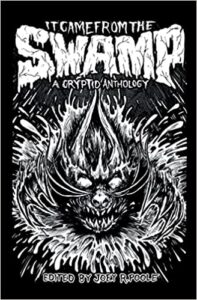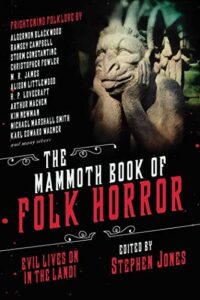

Slasher Girls & Monster Boys edited by April Genevieve Tucholke
Speak, 2015
ISBN-13: 978-014751408
Available:
Slasher Girls & Monster Boys is an anthology of stories by YA authors, including Kendare Blake, Jonathan Maberry, Carrie Ryan, Leigh Bardugo, and Marie Lu. Each story is based on a horror movie, television show, or fiction, or some combination. Strangely, the inspirations for the stories are only indicated at the end of each story, upside down in tiny print at the bottom of the page. Observant fans with a wide knowledge of the genre will probably be able to hazard some good guesses, but it really doesn’t matter– the theme is incidental, and the stories stand on their own.
Some stories stand out more than others. Nova Ren Suma’s “The Birds of Azalea Street” is a creepy tale about three girls who uncover a neighborhood pedophile. April Genevieve Tucholke’s “The Flicker, The Fingers, The Beat, The Sigh” riffs on I Know What You Did Last Summer, with an outcast girl from school as the victim. The awfulness of the teenagers, and the regret and memories of the narrator, as well as the eventual consequences, are what make this a horrific and tragic story. In “Fat Girl With a Knife” Jonathan Maberry gives us a great character with a taste for revenge who discovers a talent for zombie-killing. I would love to see him do more with this character, as it felt like this ended too quickly. Megan Shepherd spins a story about a girl who outwits death in “Hide and Seek.” In “Sleepless”, Jay Kristoff pulls the rug right out from under your feet, just when you think you’ve figured out what’s going on. This is one of the best stories in the book. In Marie Lu’s powerful “The Girl Without A Face” a boy at the height of privilege is forced to face the consequences of raping a girl who died by suicide by her ghost. What part of this story is most horrifying is up to the perception of the reader. “Stitches”, by A.G. Howard, while it required a significant suspension of disbelief as regards medical procedures, is an imaginative twist on Frankenstein, and a great character study of a girl whose abusive father makes a deal with a “collector” to have her amputate his body parts and replace them with others in order to pay the bills. Finally “On the I-5” gives us the story of a hitchiker ghost out for revenge.
Some stories didn’t hit quite the right note with me. Carrie Ryan’s “In The Forest, Dark and Deep”, is a surreal, disturbing, and bloody take on Alice in Wonderland. It’s one of the truly horrific tales in the set, but I’m not sure most teens will have the patience for the style. “Emmeline”, by Cat Winters, mixes up several movies and books to create a supernatural tale set in the era of World War I, setting up an uneasy Angela Carter-esque romance that can only end badly. While I enjoyed the story I don’t know that it has a contemporary enough tone to appeal to modern teen readers. “Verse Chorus Verse” gets into the price a parent is willing to pay for their child’s fame, and the build-up is freaky, but as it’s mostly told from the parent’s point of view, it didn’t seem to really belong in a YA anthology. In”The Dark, Scary Parts and All” a bullied, grief-stricken girl is offered the power to do her worst, if she’s willing to take it. The relationships and decisions in this story just felt off. “M” is a strange little story that seems to belong more in an Agatha Christie novel than in an anthology of horror stories. I wanted to like it more, as there was a very Edward Gorey-esque influence, and the choice of a blind main character was interesting, but it wasn’t enough. “A Girl Who Dreamed of Snow” seemed more like fantasy than horror, with a shaman girl sacrificing the men who kidnap her to appease spirits who will end a plague and save humanity from extinction.
A strong majority of the authors in this anthology are women, which seems to be the case overall in YA horror right now, as are the majority of the protagonists. In the cases where the story is told from a boy’s point of view, he is not usually presented in a terribly sympathetic manner, and generally it’s difficult to believe he isn’t getting his just desserts. Very few stories stood out to me as presenting a woman with agency: “Fat Girl With a Knife” has a main character who’s already out for revenge against the school bullies when a zombie outbreak starts, “A Girl Who Dreamed of Snow” has a girl with a plan in place that she carries through, and the girl in “Hide and Seek” is smart, strategic, and tricky. I loved seeing these characters take charge.
While I found this anthology to be a mixed bag, it covers a lot of ground, and I think most readers, especially girls, will find something to enjoy. Recommended.
Contains: gore, violence, murder, torture, references to pedophilia, references to rape, references to suicide, body horror
Editor’s note: Slasher Girls and Monster Boys was a 2019 Summer Scares YA pick.







Follow Us!